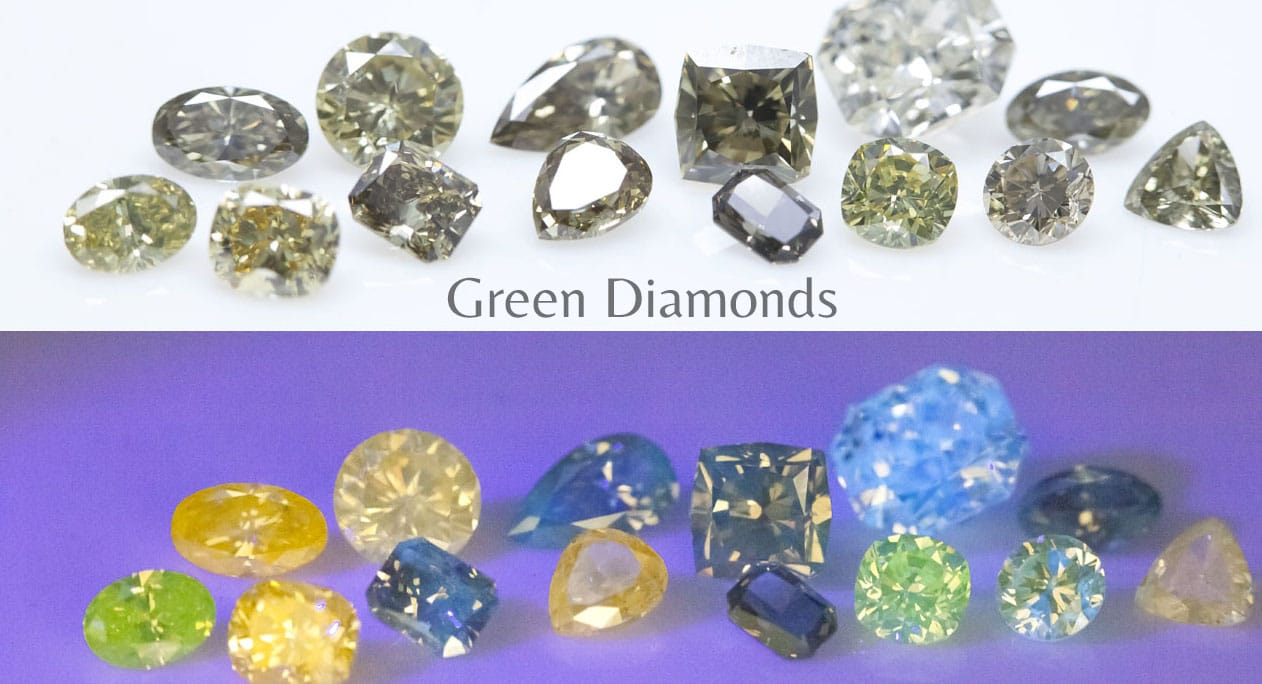Fluorescence refers to a diamond’s tendency to emit a soft colored glow when subjected to ultraviolet light (such as a “black light”). Roughly 30% of diamonds fluoresce to some degree. Colorless (D-F) fluorescent diamonds sell at up to a 15% discount since the fluorescence is perceived as a defect. In fact, the visible effects of Faint to Medium fluorescence are perceptible only to a gemologist using a special UV light source because the fluorescent glow is usually blue (which is the complementary color to yellow) fluorescence can make diamonds of I-M color appear up to one grade whiter. For this reason I-M diamonds tend to sell at a slight premium when they possess Medium to Very Strong fluorescence. In a small number of diamonds, the presence of strong fluorescence creates a hazy, milky, oily, or cloudy appearance. For this reason, very fluorescent diamonds can be valued lower than similar diamonds with fluorescent ratings of “None,” “Faint,” or “Medium.” If you have selected a diamond with “Strong” or “Very Strong” fluorescence, please contact a Brilliance diamond and jewelry expert to have it visually inspected before purchasing. While there are many false and misinformed opinions on whether the presence of fluorescence in a loose diamond is good or bad, it’s best to consider the GIA’s in-depth, long-running, scientific study of fluorescence: “GIA studies show that for the overwhelming majority of diamonds, the strength of fluorescence has no widely noticeable effect on appearance. In the GIA Fluorescence Study, it was found that the average person could not make a distinction between a diamond with fluorescence and a diamond without. In many instances, observers prefer the appearance of diamonds that have medium to strong fluorescence. In rare cases, some diamonds with extremely strong fluorescence may appear hazy or oily; fewer than 0.2% of the fluorescent diamonds submitted to GIA exhibit this effect.”

Differences in Diamond Fluoroescence :
Overall, diamond fluorescence should not be a major factor in the purchase of a diamond since its effects are negligible, if not slightly positive. The exception would be to exercise caution in purchasing a diamond with Strong fluorescence in D-F color diamonds or Very Strong fluorescence in G-H color diamonds (which do not possess enough body color to offset the degree of fluorescence). A Star Diamonds displays the fluorescence grade as determined by the GIA,

Very Strong, Strong, Medium, Faint, None
For a precise summary of the effects of fluorescence on price, use the chart below. The effect on price varies depending on the degree of fluorescence, diamond color, and clarity. For example, according to the chart, an E color diamond of VS1 clarity and Strong Fluorescence will tend to sell for 3-5% less than a like diamond with no fluorescence. Alternatively, a J color diamond of any clarity and Medium fluorescence will typically sell for up to 2% more than a like diamond with no fluorescence. While clarity has no bearing on the appearance of color and fluorescence, it does impact price. This is because customers who gravitate towards higher clarity tend to be more adverse to the presence of fluorescence.

HOW FLUORESCENCE AFFECTS PRICE:
Do you have questions about fluorescence or other aspects of a diamond?
A consultant will answer any questions you have, and if you like, search for diamonds on your behalf that match your criteria. You will find fluorescence in following grading: NIL or NONE, Faint, Slight, Medium, Strong, Very Strong.